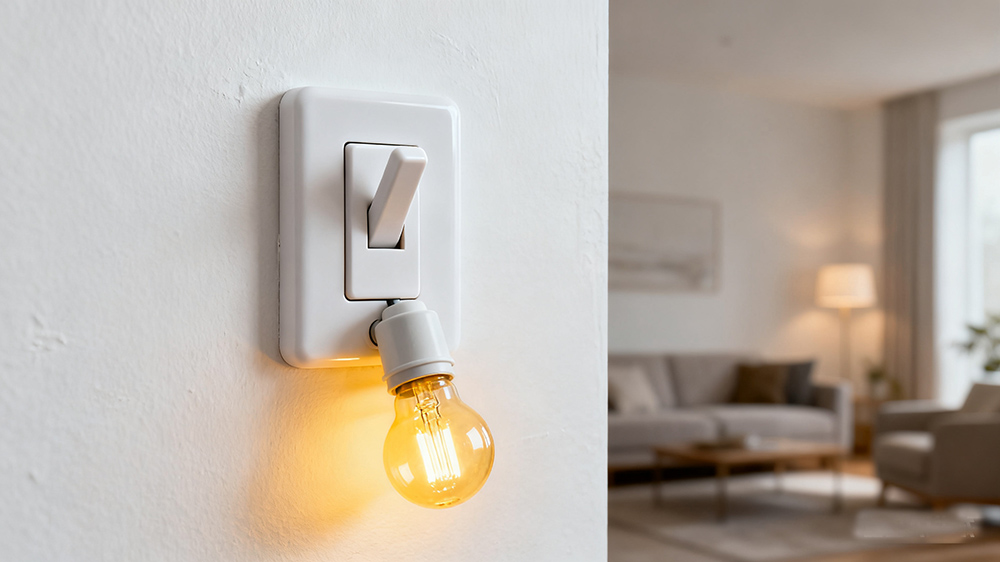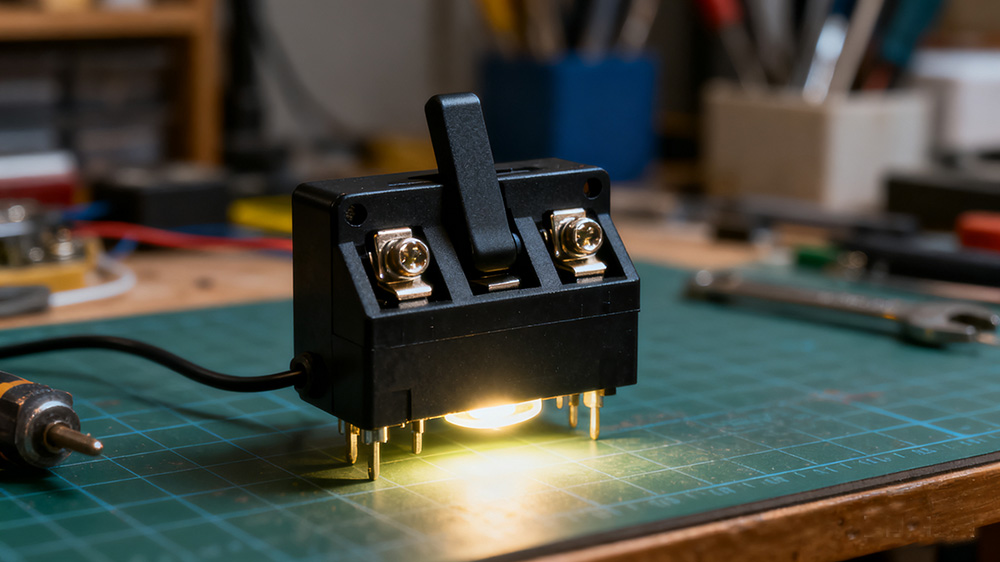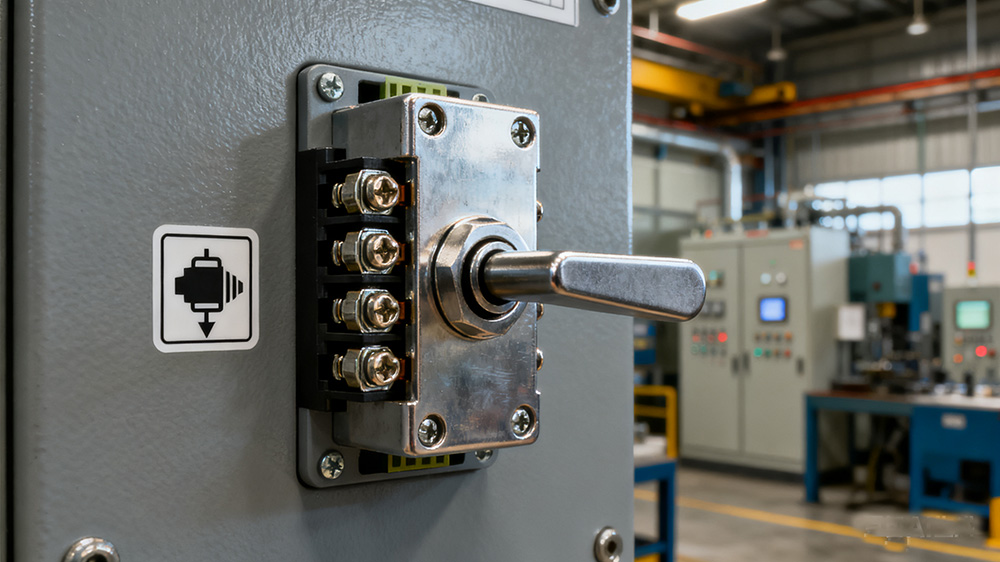Toggle switches are something many of us interact with daily, whether it’s flipping a switch to turn on a light, or controlling heavy machinery in industrial settings.
But how many of us truly understand the different types of toggle switches and their specific uses? In this blog, we’ll explore the three main types of toggle switches with examples that both beginners and professionals can appreciate. Let’s dive in!
1. Single-Pole Toggle Switches

What is a Single-Pole Toggle Switch?
The single-pole toggle switch is perhaps the most common and recognisable type of switch. As the name suggests, it has just one pole, meaning it controls only one circuit.
It’s the kind of switch you’ll find in many household light fixtures and small appliances. The switch has two positions: on and off, which means it either connects or disconnects the power to a single circuit.
How Does It Work?
A single-pole toggle switch works by either completing or breaking the circuit. When the switch is in the on position, the circuit is closed, allowing electricity to flow through. When the switch is in the off position, the circuit is opened, and the electricity flow is cut off. It’s as simple as flipping the switch to control the device!
Common Real-World Example
The most obvious example of a single-pole toggle switch is the light switch. Whether it’s in your home or office, a light switch is typically a single-pole toggle switch controlling the flow of electricity to the light bulb.
Another example would be a simple fan switch in household appliances, where the switch controls one circuit: turning the fan on or off.
Advantages
- Simple to use: Perfect for beginners and everyday applications.
- Cost-effective: Single-pole switches are cheap to produce and install.
- Widespread availability: Easy to find and replace.
2. Double-Pole Toggle Switches

What is a Double-Pole Toggle Switch?
If you need more control, a double-pole toggle switch might be the right choice. This switch is designed to control two separate circuits simultaneously, which makes it ideal for more complex systems that require controlling both the live and neutral wires at once.
The double-pole switch has four terminals, two for each circuit, so when the switch is toggled, both circuits are either connected or disconnected at the same time.
How Does It Work?
Just like the single-pole switch, the double-pole toggle switch can either allow or stop the flow of electricity. But in this case, it controls two separate electrical circuits at once.
When in the on position, both the live and neutral circuits are connected, allowing electricity to flow through. When turned to the off position, both circuits are disconnected, ensuring the power is completely cut off.
Common Real-World Example
A common example of a double-pole toggle switch can be found in large kitchen appliances, like an electric stove. The switch here controls both the live and neutral wires to ensure the appliance is completely powered down when turned off. Another example is in heavy machinery where controlling both circuits at the same time is crucial for safety reasons.
Advantages
- Safety: Disconnects both live and neutral circuits simultaneously, reducing electrical hazards.
- Ideal for high-power applications: Suitable for larger appliances or industrial systems.
3. Multi-Pole Toggle Switches

What is a Multi-Pole Toggle Switch?
Now, for the most complex of the bunch: multi-pole toggle switches. These switches can control multiple circuits, often more than two.
A three-pole toggle switch, for example, would control three separate circuits at once, with six terminals. These are used when you need to manage several electrical pathways simultaneously, and they are essential in more advanced systems.
on is similar to that of a double-pole switch but on a larger scale. Each pole of the switch controls one circuit, so a three-pole switch manages three separate circuits. When the switch is toggled, all three circuits are either connected or disconnected based on the position of the switch.
Common Real-World Example
You’ll typically see multi-pole toggle switches used in industrial settings, where they control complex machinery or equipment. For example, in a three-phase electrical system, a multi-pole toggle switch can control all three phases of power.
Additionally, large-scale electrical panels in factories or power plants often use multi-pole toggle switches to manage various components of the system, such as different sections of lighting or machinery.
Advantages
- High versatility: Ideal for controlling multiple circuits simultaneously, saving space and wiring.
- Efficient: Reduces the need for multiple individual switches in large systems.
To sum up
Toggle switches come in many forms, but the three main types are single-pole, double-pole, and multi-pole. Understanding the differences between these switches is essential for both professionals and beginners. It helps make more informed decisions, ensuring safety and efficiency in electrical setups.
If you’re working on your next electrical project, take the time to choose the right switch and ensure the best performance. Get in touch with our experts today to learn more or to find the perfect toggle switch for your needs!
 +86 138-6870-3133
+86 138-6870-3133 sales@lanzmfg.com
sales@lanzmfg.com EN
EN CN
CN Search
Search